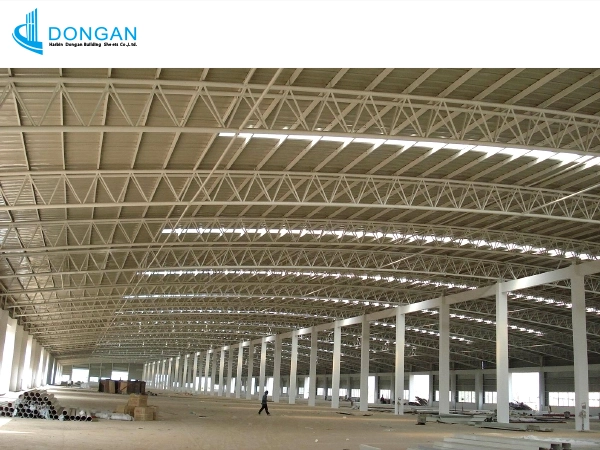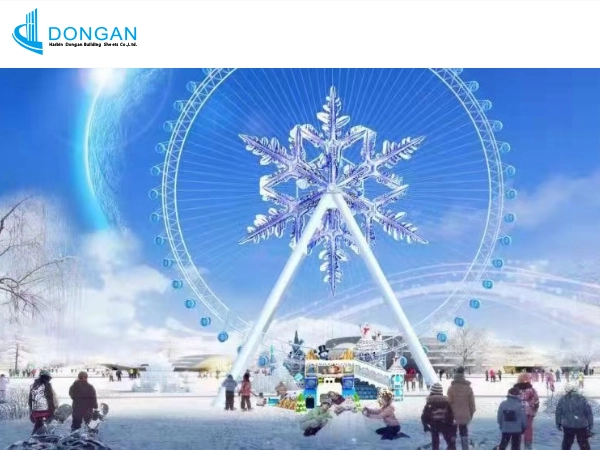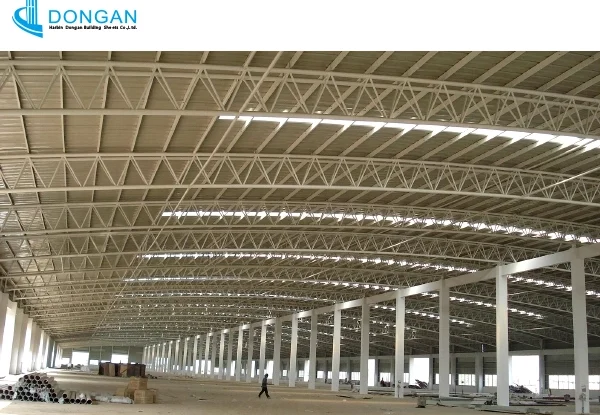In contemporary construction and engineering, there has never been a greater demand for efficient, durable, and pleasing-to-the-eye structures. Of the solutions presented in constructed steel structure design, the pipe truss constitutes one of the most pragmatic solutions. As one of the fundamental components of contemporary steel structural systems, pipe trusses balance structural economy with architectural versatility, rendering them of incredibly high utility in applications from gigantic sports stadiums to elevated pedestrian bridges.
This article discusses the technological advantages, structural standards, manufacturing processes, and multi-faceted uses of pipe trusses in contemporary structures. We will outline the reasons why designers and engineers would like to utilize pipe truss building over conventional structuring techniques and how they are a cleaner, lower-cost method of constructing structures.
Understanding Pipe Truss Systems
A pipe truss is a triangle or some other configuration of supported structure connected to other pipes and placed on steel pipes. The structure stiffens due to shape and can span large distances with a high strength-to-weight ratio. Hollow cylindrical structure of pipe trusses provides maximum strength against all types of stress, like bending, compression, and torsion, compared to solid steel beams.
Comparison with Traditional Structural Systems
Pipe trusses enjoy the following specific benefits over traditional use of I-beams or box sections in prefabricated steel structure systems:
- Material Efficiency: Tubular shape is more material-efficient without degradation or even improvement of solid section load-carrying capacity.
- Aerodynamic Performance: Circular cross-sections are more resistant to wind pressure, a crucial aspect with large-spanned buildings.
- Construction Flexibility: Pipe truss module offers flexibility of transport and assembly on site.

Technical Advantages of Pipe Truss Construction
1. Improved Performance Structure
The geometrical shape of the pipe truss provides inherent stability by virtue of triangulation, which distributes the loads to the different parts of the structure. The principle of centuries-long proven bridge construction enables effective force transmission from the point where the force is transmitted to the supports.
Key performance requirements are:
- Good static and dynamic loading resistance
- Good vibration damping
- Less deflection to weight under loadings compared to traditional beams
2. Weight Optimisation
Weight saving in steel structure design translates to cost saving in the following:
- Less to purchase
- Reduced foundation load
- Less to lift and haul
- Faster installations
A standard pipe truss system can achieve 20-30% weight saving compared with similar solid-section equivalents of the same load-carrying capacity.
3. Architectural Flexibility
The air-filled thin lines and space-age, sleek curves of pipe trusses provide designers with freedom of design. Rather than unsightly I-beams so frequently needed to conceal, pipe trusses can be left exposed as architectural features. This has made them very desirable in prestige building projects where form and function are the paramount considerations.
4. Fabrication Efficiency
Since they are part of engineered steel structure systems, pipe trusses can avail themselves of advanced production methods:
- Computer-aided design (CAD) guarantees precision in the manufacture of components
- Computer-aided cutting and joining technologies simplify the processes
- Modular construction allows for prefabrication at the factory and inspection
All these lead to shortening of project times and lower on-site labor.
Widespread Applications of Pipe Truss Systems
1. Colossal Roofing Frames
Since having the capability to span 100 meters or more without supports in between, pipe truss systems are best suited for:
- Sports stadiums and arenas
- Airport terminals
- Convention centers
- Industrial warehouses
The Beijing National Stadium (“Bird’s Nest”) utilized a sophisticated system of pipe trusses in order to obtain its now-recognizable shape while meeting strict seismic requirements.
2. Bridge Engineering
Pipe trusses are especially suited to bridge applications due to their:
- Strong strength-to-weight ratio
- Resistance to dynamic loadings
- Flexibility to shape geometries of various forms
Typical bridge forms making use of pipe trusses include:
- Pedestrian bridges
- Highway overpasses
- Railway bridges
- Transient military bridges
3. Industrial Buildings
In corrosive industrial environments, steel structure systems incorporating pipe trusses provide:
- Long spans for open floor space
- Resistant responses to heavy machinery vibrations
- Corrosion resistance in corrosive environments (with adequate treatment)
Typical uses are:
- Power plant buildings
- Oil and gas processing plants
- Manufacturing facilities
- Mining equipment
4. Special Structures
Pipe truss design flexibility is seen in a variety of specialized applications:
- Temporary festival and concert halls
- Exhibition pavilions
- Aircraft hangars
- Disaster-relief shelters
- Transmission towers
Critical Design Considerations
An effective installation of a pipe truss system in a pre-fabricated steel structure requires careful consideration of several engineering factors:
1. Load calculation and structural analysis
Engineers need to consider:
- Dead loads (permanent weights on buildings)
- Live loads (occupancy and use loads)
- Environmental loads (wind, snow, and seismicity)
- Dynamic loads (vibration, impact loading)
Advanced finite element analysis (FEA) software is typically applied to the simulation of complicated load conditions.
2. Connection design
Pipe member attachments are high-stress regions. Various common attachment methods are:
- Permanent structures – direct welding
- Modular systems – flange connections
- Heavy-load situations – gusset plates
Effective connection design avoids premature failure and efficient load transfer.
3. Corrosion Protection
Due to their widespread exposure application, pipe trusses should be provided with proper corrosion protection:
- Hot-dip galvanizing
- Special paint systems
- Stainless steel cladding in aggressive environments
4. Fire Resistance
While steel in itself is non-combustible, its strength diminishes with rising temperature. Fire protection methods are:
- Intumescent coatings
- Concrete encasement
- Spray-applied fireproofing materials
Installation and Construction Best Practices
The benefits of pipe truss systems can be obtained only through proper installation:
1. Pre-Assembly Verification
- Perform trial fittings before final installation
- Check all points of connection and tolerances
2. Lifting and Positioning
- Utilize proper crane capacity calculations
- Utilize temporary bracing in erection
3. Quality Control
- Non-destructive testing of critical welds
- Dimensional accuracy checks
4. Safety Considerations
- Protection of workers from falls
- Monitor load during lift operations

New Pipe Truss Trends
Steel structure technology advances the application of pipe trusses:
- New Materials: More, but lighter steel alloys for even lighter structures
- Digital Fabrication: Robot and 3D printing of complex nodal connections
- Sustainable Solutions: Disassembly design and recyclable material
- Smart Structures: Built-in sensors to monitor live structural health
Conclusion
Pipe truss is an art form in contemporary steel structure engineering. With lower material efficiency, structural performance, and aesthetic potential, these systems are overcoming the intrinsic limitations of contemporary building. Whether constructing massive stadium spans or slender bridge spans, pipe trusses are pushing the limits of steel construction.
As we look towards future infrastructure demands, pipe truss technology will continue to expand in applications underpinning material technology development, computer-planned construction, and sustainable design. Pipe truss applications are at the cutting-edge of the new steel building design era for designers, engineers, and contractors who want to provide optimum structural performance.
Thanks to judicious application of pipe truss expertise, the building industry is now capable of achieving more performance, economy, and beauty in buildings of small to monstrous size.






